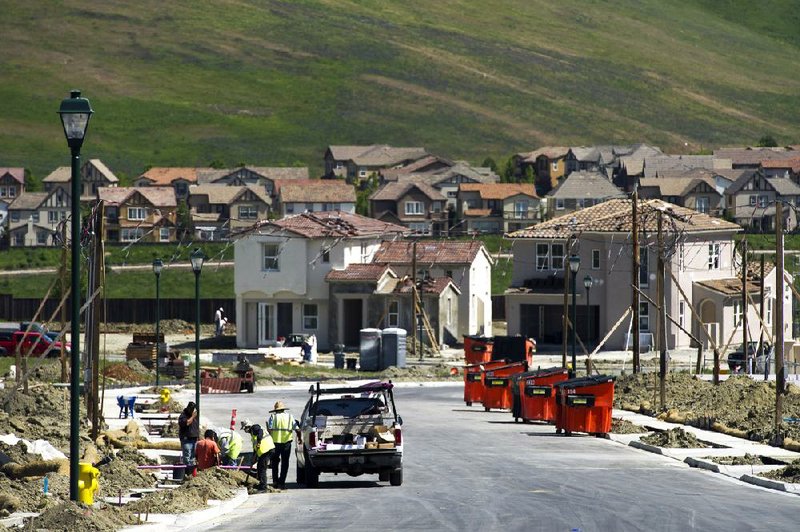Purchases of new U.S. homes rose in March, capping the best quarter for the industry since 2008 and providing more evidence the housing recovery will be sustained.
Sales of single-family properties climbed 1.5 percent last month to a 417,000 annual pace from a 411,000 rate in February, the Commerce Department said. The median estimate of76 economists surveyed by Bloomberg called for March sales to rise to 416,000.
A dearth of existing properties is encouraging builders to under take new projects that will keep fueling the economy. Mortgage rates close to record lows, higher home values and rising household formation are helping lay the groundwork for increased buyer traffic in 2013.
“The housing sector continues to be the bright spot for the economy,” said Ward Mc-Carthy, chief financial economist at Jefferies LLC in New York, who projected a 418,000 pace of home purchases. “Inventories are light, which means that builders are going to keeping building.”
Home sales averaged a 424,000 annual rate in the first three months of this year, the strongest since the third quarter of 2008.
Economists’ estimates ranged from a March sales rate of 395,000 to 435,000. February was previously reported at a 411,000 annual rate.
New-home purchases were 17.6 percent higher inMarch than the same period in 2012 on an unadjusted basis, Tuesday’s report showed. The median price of a new home climbed 3 percent last month from a year ago to $247,000.
Purchases increased in two of four regions in March, with a 20.6 percent gain in the Northeast and a 19.4 percent advance in the South. Sales decreased 20.9 percent in the West and 12.1 percent in the Midwest.
Builders are responding to increased demand by making more homes available. There were 153,000 new houses on the market at the end of March, the most since November 2011. At the current sales rate, the supply would last 4.4 months,the same as in February.
Housing starts climbed to a 1.04 million annual rate, the fastest since June 2008, the Commerce Department said last week.
At the same time, some builder optimism has faded, reflecting higher costs for raw materials, limited developed land and tight credit conditions. The National Association of Home Builders/ Wells Fargo index of builder confidence fell this month to its lowest level since October, data showed April 15.
Builders were still somewhat optimistic about the future, with a gauge of their sales outlook for the next six months increasing to the highest level since 2007.
Mortgage rates hovering near record lows and a healing job market may keep providing a spark for the industry. The average rate for a 30-year fixed mortgage fell to 3.41 percent in the week that ended Thursday, the third-consecutive drop, according to Freddie Mac, the Federal Home Loan Mortgage Corp. The rate slid to an all time low of 3.31 percent in November.
Figures out Monday from the National Association of Realtors showed previously owned homes sold at a 4.92 million rate in March, down from a 4.95 million pace the previous month.
A lack of inventory of more affordable existing properties has driven up the cost of such homes, making new construction more attractive to potential buyers. The National Association of Realtors report showed the median price of an existing home rose 11.8 percent, the most since November 2005, to $184,300 last month from a year earlier.
Sales of new homes are considered a timelier barometer than purchases of previously owned dwellings, which are calculated when a contract closes. Newly constructed houses accounted for about 7 percent of the residential market in 2012, down more than 15 percent before the 2007-2009recession began.
The strength in housing is spreading to other parts of the economy.
“The majority of the data still points to a robust and sustainable recovery,” Christopher Connor, chief executive officer of Sherwin-Williams Co., said during a Thursday earnings call. “Our sales results in the first quarter support that conclusion.”
Sales at the Cleveland-based company, the largest U.S. paint retailer, rose 1.4 percent in the first quarter from a year earlier to reach a record $2.17 billion.
Information for this article was contributed by Chris Middleton of Bloomberg News.
Business, Pages 23 on 04/24/2013

